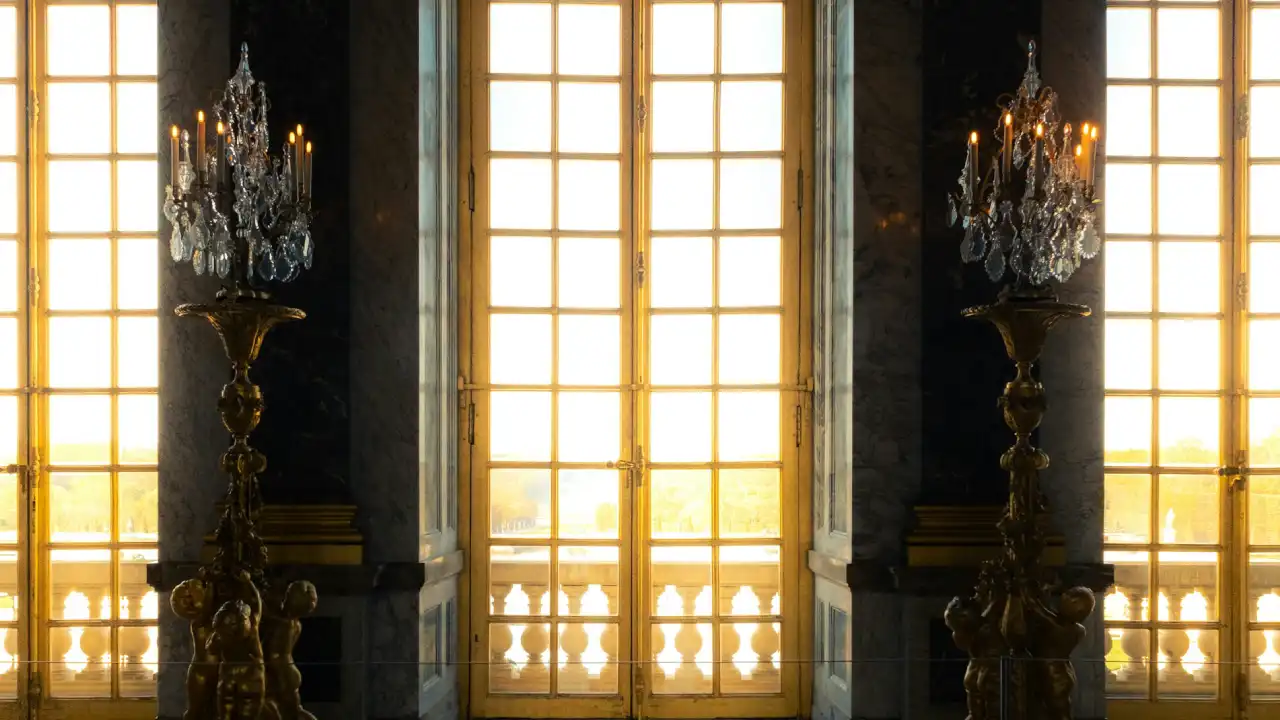
Customer support to help you with everything you need from 8.00 a.m. to 6.00 p.m.

Choose the best option for your needs and preferences and avoid the lines booking here

Enjoy art and history in Versailles, French monarchy’s masterpiece

The Palace of Versailles, one of the most opulent and historically significant royal residences in the world, is renowned for its grandeur, exquisite architecture, and richly decorated rooms. Among the many lavish spaces within the palace, the King’s Chamber, or “Chambre du Roi,” stands out as a centerpiece of regal splendor and historical intrigue. Discover the history, design, and significance of the King’s Chamber at Versailles, and all the details in the life of French monarchs and its enduring legacy.
The King’s Chamber was the private bedroom of the reigning monarch, primarily Louis XIV, Louis XV, and Louis XVI. It served not only as a personal sleeping quarters but also as a ceremonial space where the daily rituals of the king’s life were performed. These rituals, known as the “lever” (rising) and “coucher” (going to bed), were highly formalized and attended by courtiers, reflecting the king’s absolute power and the rigid hierarchy of the royal court.
Louis XIV’s Influence
The design and function of the King’s Chamber were heavily influenced by Louis XIV, the Sun King, who transformed Versailles into the symbol of absolute monarchy. He established the chambre de parade (state bedroom) as a stage for royal power, where he would conduct public ceremonies and meet with important dignitaries. The layout and decor of the room were meticulously planned to emphasize his divine right to rule and his central position in the political and social life of France.
The King’s Chamber is located on the first floor of the central part of the palace, directly facing the magnificent Marble Courtyard. Its position underscores its importance within the overall design of Versailles. The room is accessible through the Hall of Mirrors, adding to its prestige and prominence.
The decor of the King’s Chamber is a masterful blend of Baroque opulence and meticulous craftsmanship. The walls are adorned with rich tapestries and intricate wood paneling, while the ceiling features elaborate paintings by Charles Le Brun, depicting scenes that glorify the king’s reign. The centerpiece of the room is the grand bed, raised on a platform and surrounded by a gilded balustrade, emphasizing the monarch’s elevated status.
The Bed of State
The bed itself is an object of immense luxury, with sumptuous fabrics, elaborate embroidery, and a canopy adorned with the royal fleur-de-lis. It was used not just for sleeping but also as a symbol of the king’s authority. The bed’s placement and design ensured that the monarch was the focal point of the room, visible to all who entered.
Symbolic Elements
The King’s Chamber is rich in symbolic elements that reflect the power and glory of the French monarchy. The sun motifs, a recurring theme in the decor, pay homage to Louis XIV, who styled himself as the Sun King. The use of gold and precious materials further underscores the wealth and divine right of the ruler.
Daily Rituals and Court Life: The Lever and Coucher
The daily rituals of the lever and coucher were highly orchestrated events, attended by select courtiers who held the privilege of assisting the king. These ceremonies were not merely about the king’s personal routine but were acts of state, reinforcing the social hierarchy and the king’s central role in governance. The lever, which began with the First Valet de Chambre waking the king, involved multiple stages where various nobles and officers participated in dressing and preparing the monarch for the day.
Public and Private Functions
While the King’s Chamber was a site of public display, it also served private functions. It was a place where the king could retreat from the formalities of court life, although even in these moments, privacy was relative, given the presence of servants and attendants. The chamber was also used for intimate meetings and private audiences with trusted advisors and family members.
The King’s Chamber epitomizes the concept of absolute monarchy, where the king’s life was both a public spectacle and a demonstration of power. The room’s design and the rituals performed within it were carefully crafted to convey the omnipotence and majesty of the king, reinforcing his status as the ultimate authority in France.
Today, the King’s Chamber remains one of the most visited and admired parts of the Palace of Versailles. It has been meticulously preserved and restored to reflect its original splendor, allowing visitors to step back in time and experience the grandeur of the French court. The room continues to captivate the imagination, serving as a powerful reminder of the opulence and complexity of royal life.
The King’s Chamber at Versailles is more than just a bedroom; it is a monument to the power, prestige, and pageantry of the French monarchy. Through its exquisite design, symbolic decor, and the rituals performed within its walls, the chamber offers a fascinating insight into the world of the French kings and the culture of Versailles. As a key element of one of the world’s most famous palaces, the King’s Chamber remains a testament to the enduring allure and historical significance of royal opulence.
